Higher classification Gray wolf | Phylum Chordata Scientific name Canis lupus italicus Rank Subspecies | |
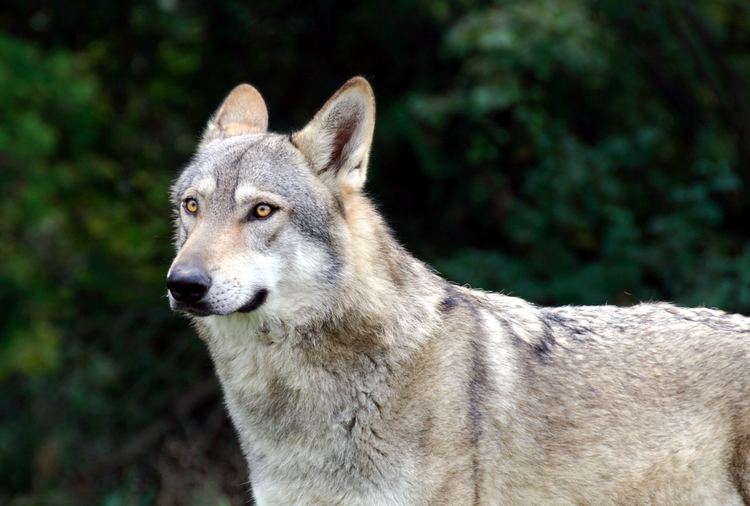 | ||
Similar Gray wolf, Canis, Marsican brown bear, Eurasian wolf, Arabian wolf | ||
Italian wolf facts
The Italian wolf (Canis lupus italicus) is a subspecies of grey wolf native to the Italian Peninsula. It inhabits the mountainous areas of the Apennines and western Alps, though it is undergoing expansion towards the north and east. As of 2005, the Italian wolf population is estimated to consist of 500 individuals. It has been strictly protected in Italy since the 1970s, when the population reached a low of 70–100 individuals. The population is increasing in number, though illegal hunting and persecution still constitute a threat. A 2016 survey conducted by ISPRA (Istituto superiore per la protezione e la ricerca ambientale) showed that there were probably between 1,269-1,800 wolves in Italy in 2009-2013. Since the 1990s, the Italian wolf's range has expanded into southwestern France and Switzerland. Although not universally recognised as a distinct subspecies, it nonetheless possesses a unique mtDNA haplotype and a distinct skull morphology.
Contents
- Italian wolf facts
- Italian wolf
- Taxonomy
- Lineage
- In Italy
- Elsewhere
- In Latin and Italian culture
- References
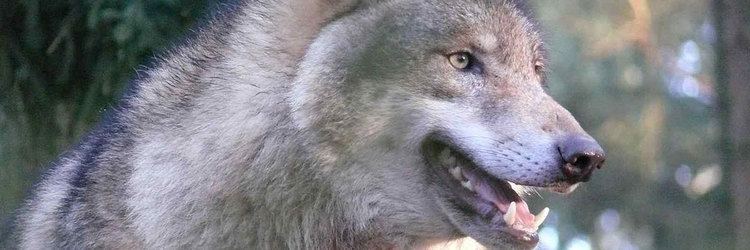
The Italian wolf weighs an average of 25–35 kg (55–77 lb), though some large males have been weighed at 40–45 kg (88–99 lb). It measures 110–148 cm in body length and 50–70 cm in shoulder height. The pelt is generally of a grey-fulvous colour, which reddens in summer. The belly and cheeks are more lightly coloured and dark bands are present on the back, tail tip and occasionally along the forelimbs. Black wolves have been reported in the north-central Apennines, though their origin is unknown, as some melanistic individuals show no sign of wolf-dog hybridisation. It typically lives in packs of 2-7 individuals.
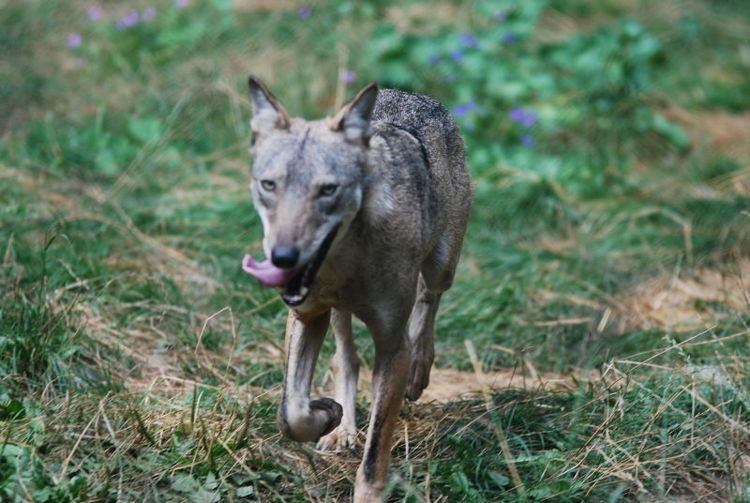
Italian wolf
Taxonomy
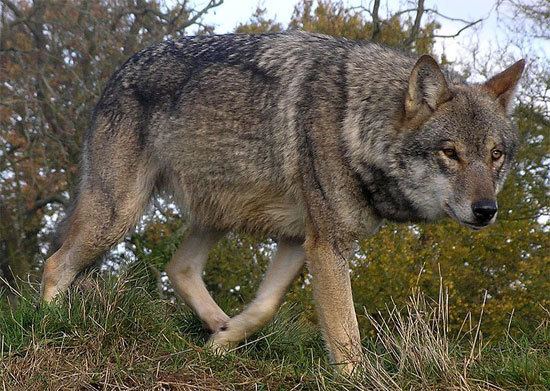
The Italian wolf was first recognised as a distinct subspecies in 1921 by zoologist Giuseppe Altobello, who noted that its colour and skull differed from that of the common European wolf. He described the Italian population's skull as being rounder in form than that of the typical European wolf, with smaller teeth closely approaching those of dogs and golden jackals in appearance. Altobello's classification was later rejected by several authors, including Reginald Innes Pocock, who synonymised C. l. italicus with C. l. lupus. In 2002, the noted paleontologist R.M. Nowak reaffirmed the morphological distinctiveness of the Italian wolf in a study on grey wolf skulls from Italy, other Eurasian localities and dog skulls. The results of this assessment showed no overlap in the skull morphology of Italian wolves and other grey wolves and dogs. Among the discovered characteristics distinguishing the Italian wolf were its relatively narrow palate between the first premolars, a broad frontal shield and shallow jugal. The study recommended the recognition of Canis lupus italicus.
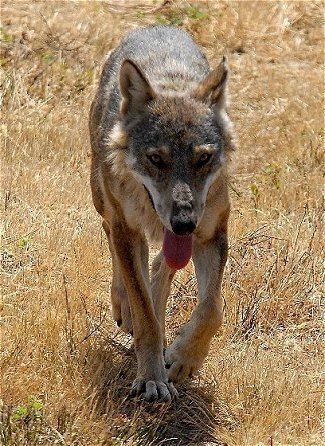
As of 2005, it is classed by MSW3 as synonymous with C. l. lupus. Nevertheless, the NCBI does list and publish research papers recognising its distinctiveness.
Lineage
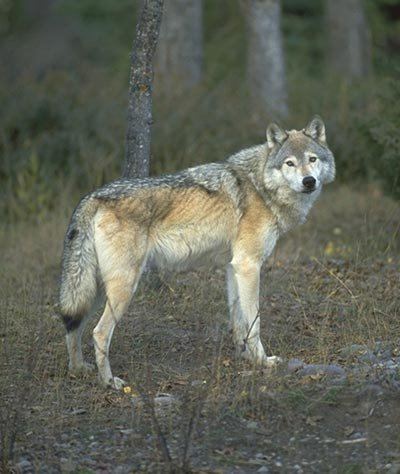
In 1992, an examination of the mtDNA of 26 grey wolf populations worldwide revealed that the Italian wolf has a unique mitochondrial haplotype not shared by any other grey wolf population. Further tests on grey wolf mtDNA revealed that, unlike several European grey wolf populations, Italian wolves do not share haplotypes with either other grey wolves or domestic dogs. In 2010, a study compared the mitochondrial DNA haplotypes of 24 ancient wolf specimens from western Europe dated between 44,000-1,200 YBP with those of modern gray wolves. The phylogenetic tree indicated that the haplotypes represented two haplogroups that were separated by 5 mutational steps. The ancient wolf samples from western Europe all belonged to haplogroup 2, indicating haplogroup 2 predominance in this region for over 40,000 years before and after the Last Glacial Maximum. A comparison of current and past frequencies indicated that in Europe haplogroup 2 became outnumbered by haplogroup 1 over the past several thousand years but in North America haplogroup 2 became extinct and was replaced by haplogroup 1 after the Last Glacial Maximum. The Italian wolf is the only remaining grey wolf subspecies to still possess this haplotype since the extinction of the Honshu wolf.
In 2016, a study of mitochondrial DNA sequences of both modern and ancient wolves indicated that in Europe, the two most genetically distinct haplotypes form the Iberian wolf and separately the Italian wolf. The phylogenetic tree generated from the sequences showed the Italian wolf positioned close to the ancient wolves of the Late Pleistocene. In 2017, a study found a second haplotype that belonged to the Italian wolf, and called for the morphologically and genetically distinct Italian wolf to be considered as a subspecies.
In Italy
The Italian wolf was widespread in the Italian Peninsula, including Sicily, up until the mid 1800s. The extermination of the grey wolf in Italy was not as complete as in Northern Europe, due to greater cultural tolerance of the species. It was largely extirpated in the Alps during the 1920s, and disappeared from Sicily in the 1940s. Its range along the south-central Apennines was still relatively continuous by the 1950s, though this population was reduced in the decades after World War II because of widespread poisoning campaigns. At least 400 wolves were killed between 1960 and 1970, with the population reaching an all-time low in the early 1970s. The last documented wolf in the northern Apennines was killed in Santo Stefano d'Aveto, Genoa in 1946, though this was an isolated individual, as the local wolf population had long been extinct.
The Italian wolf was first given legal protection on 23 July 1971, with a nationwide population census being taken in 1973. This census was funded by the Italian branch of the World Wide Fund for Nature as part of a conservation plan dubbed "Operation Saint Francis". The census revealed that the Italian wolf population consisted of 100–110 individuals distributed throughout a fragmented range in the main mountainous aras of south-central Italy, from the Sibillini to La Sila. In 1983, the population had reached 200–220 individuals inhabiting two unconnected areas in central and southern Italy. By the late 1990s, it was estimated that the Italian wolf population had increased to 400–500 individuals with a continuous distribution along the entire Apennines, from Aspromonte to the Maritime Alps, with some isolated populations in Tuscany and Lazio. In 2008, a wolf carcass was discovered in the Fiemme Valley in Trentino, and by 2010, 45–55 wolves were estimated to have recolonised Piedmont. A 2016 survey conducted by ISPRA (Istituto superiore per la protezione e la ricerca ambientale) showed that there were probably between 1,269-1,800 wolves in Italy in 2009-2013, a figure which is likely to be an underestimation. It was estimated that 57-89 inhabited the alps, 1,037-1381 in the north-central Apennines, and 175-330 in the southern Apennines.
Elsewhere
The Italian wolf was first sighted in southwestern France in 1992. In the two decades following its initial recolonisation, the wolf has expanded its range at the west of the Rhône, in the Massif Central, the eastern Pyrenees, and the Jura and Vosges Mountains. At least thirteen transient Italian wolves (twelve males and one female) were counted in Catalonia between 2000 and 2011, a century after the local Iberian wolf (C. l. signatus) was extirpated from the area.
The first evidence of grey wolf expansion into Switzerland occurred in 1995–1996 in the southern Canton of Valais, where around 100 sheep had been killed. In 1998–1999, 40 sheep were killed and two wolves found dead from poaching and car collisions. Italian, French and Swiss wolves share the same mtDNA haplotype, a haplotype that has never been found in any other wolf population worldwide, which corroborate the scenario of a natural expansion of wolves from the Italian source population.
In Latin and Italian culture
The animal features prominently in pre-Roman, Roman and later Italian cultures. In Roman mythology, the wolf played a role in the founding of Rome by suckling the twins Romulus and Remus. According to Terry Jones, "The Romans did not see [the tale of Romulus, Remus and the she-wolf] as a charming story; they meant to show that they had imbibed wolfish appetites and ferocity with their mother's milk". The wolf was also considered sacred to Mars, and to see a wolf before going into battle was considered a good omen. The origin of the myth can be traced back to a wolf cult among the neighbouring Sabines. The Sabines had two words for wolf: hirpus (used in religious contexts) and lupus, the latter of which was incorporated into Latin.
Although the Romans did not worship wolves, killing them was likely considered taboo; unlike the Etruscans, the Romans very rarely sacrificed wolves in rituals, and there are no records of wolves being used in the amphitheatres, despite being more numerous and easily accessible compared to other, more exotic animals used. The use of wolves in Roman folk medicine, while attested by Pliny the Elder, was minimal compared to other animals like snakes or bears and, contrary to popular imagery, Roman standard-bearers did not wear wolf skins, with the only units attested to have worn them being the velites, who were mostly poor Germanic subjects with no compunction over using wolf skins. Wolves entering cities or temples were usually only killed when the animal had no means of escape, unlike the case with wasps, oxen and owls, which were quickly eliminated if they entered sacred areas. Negative attitudes towards wolves in Italy largely began with the invasion of the Lombards, who zoomorphically described their raids and invasions as wolf raids, bringing wolves into disrepute. The belief in werewolves was still widespread in Italy during the early 1920s, and it was once traditional among rural people to cover their faces when resting outside at night, as it was thought that sleeping whilst facing the full moon could transform the sleeper into a wolf. The wolf also featured prominently in Italian folk medicine. Baby colic was treated by tying a sack filled with a piece of wolf gut around the child's neck, while miscarriages were prevented by tying a wolf's intestine around the mother's abdomen. Rheumatism and tonsillitis were treated with wolf fat, while a tooth or tuft of fur was worn as a talisman against the evil eye.
The Romans apparently did not consider wolves overly dangerous to people, with the only references to them attacking people being proverbial or mythological. Although Italy has no records of wolf attacks on humans after World War II and the eradication of rabies in the 1960s, historians examining church and administrative records from northern Italy's central Po Valley region (which includes a part of modern-day Switzerland) found 440 cases of wolves attacking people between the 15th and 19th centuries. The 19th century records show that between 1801–1825, there were 112 attacks, 77 of which resulted in death. Of these cases, only five were attributed to rabid animals.
